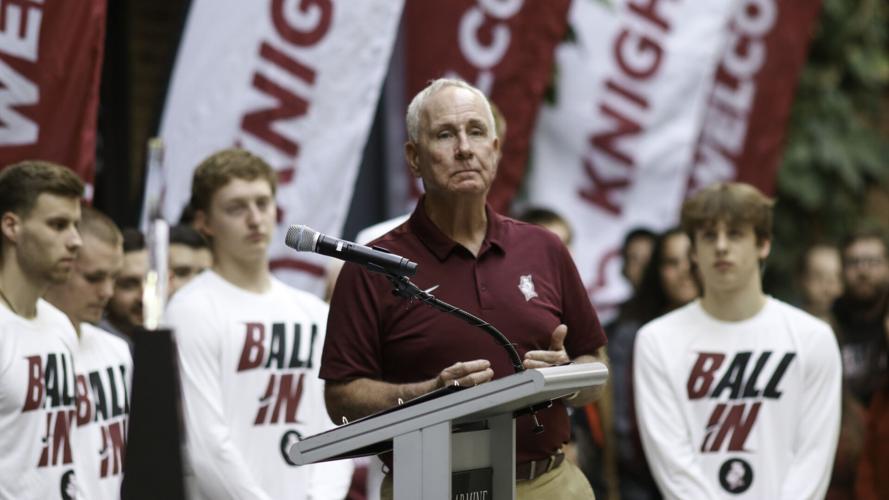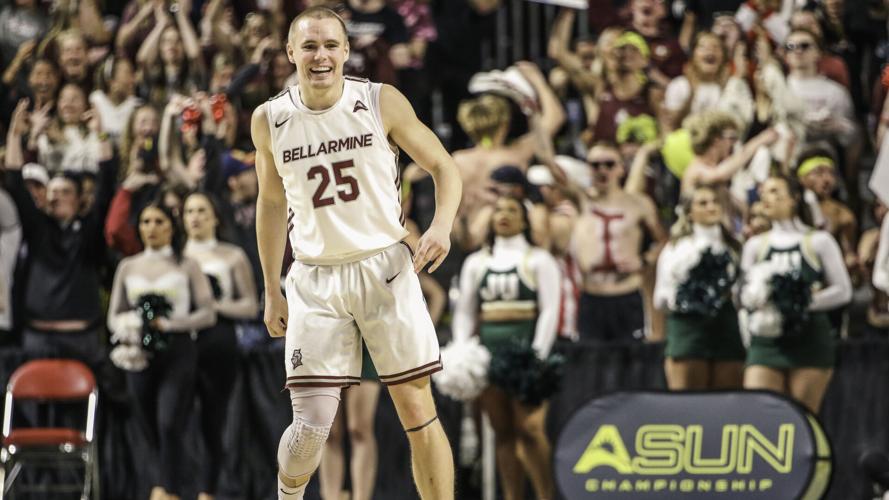LOUISVILLE, Ky. (WDRB) -- Stop me if you've heard this before. The NCAA is moving at a snail's pace. It's hitching up its horse and buggy. That squealing you hear? It's not the NCAA revving its engines. It's the NCAA logging onto a dial-up internet connection.
On April 13-14, the NCAA Division I Council tabled most of its pending legislation until later this summer. After waiting for five months, it simply punted its pile of work down the road another three or four months.
Included in that tabled legislation was a proposal that would've cut the time a reclassifying member would have had to be ineligible for the NCAA Tournament from four years down to two.
By tabling it, the NCAA basically said "no" to Bellarmine. Head coach Scott Davenport will have to keep recruiting without the promise of an NCAA Tournament. At least one Bellarmine player, Dylan Penn, has been watching the NCAA carefully, and having already entered the transfer portal, is likely to exercise it with no NCAA Tournament on the table.
Bellarmine is officially requesting a waiver from the NCAA, citing precedent and undue strain on its men's basketball players, who lost a chance to play in the NCAA Division II Tournament, like everyone else because of COVID-19 in 2020, and again lost out after last season's historic success.
These are young players who don't deserve to be screwed around by a vast bureaucracy. A popular refrain: "Well, they can transfer." Sure they can. Some of them might. But the fact is — and this is a concept so revolutionary it could shock you – they actually are college students. They have lives and careers to prepare for. They are involved in courses of study that are going to be their livelihoods. Basketball is only a part of that, not the goal of it.
Why should they have to transfer just because the NCAA lacks the competence to make a call? There is no reason, in 2022, that an NCAA athlete ought to have to make a choice between an academic career and an opportunity to play for an NCAA championship, if he's at a member school.
At the very least, the NCAA Division I Council ought to have had the courage to say "no." Then Bellarmine would know where it stands. But as often happens with the NCAA, the organization snivels and delays and makes no decision.
It waits five years before holding a hearing on possible violations.
It steps aside because it can't get its act together on NIL.
It wrings its hands at major sexual abuse scandals but refuses to charge into the fray out of fear of litigation.
In the meantime, schools and athletes and everyone else twists in the wind.
I want the NCAA to work. I think college sports are better when there are collective guardrails. But to work, you've got to actually do something. You have to take stands. You can't just sit around and pass decisions from one committee meeting to the next.
ASUN Commissioner Ted Gumbart is on board with Bellarmine. He has sent a letter to the school to be included in its request for a waiver.
"The ASUN does not believe there should ever be a circumstance in which the governing structure of our member organization should purposefully exclude a defined class of student-athletes from ever participating in an NCAA Championship event," he wrote.
He contends that the sponsoring of some 90 championship events across all divisions is one of the greatest benefits the NCAA extends to college sports.
"It is not fair in any reasonable sense for a conference and a university to be members of the association, yet denied the primary benefit of membership," he wrote. ". . . the membership must find a way to put its student-athletes first. Surely Supreme Court judgment is not needed for our collective administrative leadership to conclude that our environment has changed and our rules have not kept up. The transfer portal, NIL contracts, the Alston outcome, the new NCAA Constitution, the social and gender equity and justice changes, transgender rules, COVID waivers for eligibility and the NCAA rules modernization committee work are all major signals that we have much work to do to bring the NCAA up to today’s expectations in the eyes of our students, our fans, and our governing administrators."
Maybe that guy should be president of the NCAA.
The rules governing reclassification from NCAA Division II to Division I were written to deal with a different NCAA landscape. Too many schools were jumping that weren't ready. The four-year reclassification window was put in to make sure schools were serious before making the jump, and to allow them to get up to speed before hitting full Division I status. But that was before schools had to pay big fees just to join a conference ($1.6 million for Bellarmine to join the ASUN).

From left, Bellarmine senior captains Dylan Penn, CJ Fleming, Juston Betz and Ethan Claycomb talk about the days following their ASUN Tournament championship, and their frustrations at not being able to play in the NCAA or NIT postseason tournaments.
Moreover the four-year reclassification ban prohibits an entire class of athletes from participating in NCAA championship competition, based solely on the NCAA school they chose to attend.
Waivers have been flying right and left for the past two years. For everything. Even for this. The University of St. Thomas in Sioux Falls, S.D. wanted to reclassify from Division III to Division I. Because it was skipping a Division, it faced a 12-year NCAA Tournament ban. That was deemed excessive by the NCAA, which granted a waiver to make St. Thomas sit out for only five years.
So there is a precedent for reducing the number of years a school must sit out of the NCAA Tournament based on circumstance.
Bellarmine's is this: It has proven the ability to earn its way into the NCAA Tournament on the court. It graduates its players (its five seniors this past season have a total of 8 college degrees.) It has been a Division I member in lacrosse for 19 years. It isn't going anywhere.
Mike Wilbon, on ESPN's Pardon the Interruption, said back on March 12, "I wish there was some sort of protest that could go into effect now to just sort of slap around the NCAA. I guess there’s nothing this little school can do. That’s what the NCAA does, it picks on little schools."
The NCAA Division I Council had a chance to do something about that. It made a decision on only one issue -- regarding summer activity in college football. It said it made that decision because time was of the essence.
What the NCAA doesn't understand is that time is of the essence everywhere, except, apparently, within its organization.
The times are changing, rapidly, and the NCAA framework is proving either unable or unwilling to keep up.
Either way, it has to change, or its own time will run out, no doubt sooner than it thinks.
Copyright 2022 WDRB Media. All Rights Reserved.


















